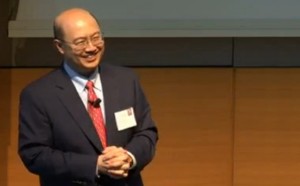Research
Accelerating Biomedical Innovation: A Case Study of the SPARK Program at Stanford University, School of Medicine
Kim, Esther S., Paige M. C. Omura, and Andrew W. Lo (2017), Accelerating Biomedical Innovation: A Case Study of the SPARK Program at Stanford University, School of Medicine, Drug Discovery Today 22 (7), 1064–1068.
View abstract
Hide abstract
Translating academic medical research into new therapies is an important challenge for the biopharmaceutical industry and investment communities, which have historically favored later-stage assets with lower risk and clearer commercial value. The Stanford SPARK program is an innovative model for addressing this challenge. The program was created in 2006 to educate students and faculty about bringing academic research from bench to bedside. Every year, the program provides mentorship and funding for approximately a dozen SPARK ‘scholars,’ with a focus on impacting patient lives, regardless of economic factors. By reviewing the detailed structure, function and operation of SPARK we hope to provide a template for other universities and institutions interested in de-risking and facilitating the translation of biomedical research.
Kim, Esther S., and Andrew W. Lo (2016), Business Models to Cure Rare Disease: A Case Study of Solid Biosciences, Journal of Investment Management 14 (4), 87–101.
View abstract
Hide abstract
Duchenne muscular dystrophy (DMD) is a rare genetic disorder affecting thousands of individuals, mainly young males, worldwide. Currently, the disease has no cure, and is fatal in all cases. Advances in our understanding of the disease and innovations in basic science have recently allowed biotechnology companies to pursue promising treatment candidates for the disease, but so far, only one drug with limited application has achieved FDA approval. In this case study, we profile the work of an early-stage life sciences company, Solid Biosciences, founded by a father of a young boy with DMD. In particular, we discuss Solid’s one-disease focus and its strategy to treat the disease with a diversified portfolio of approaches. The company is currently building a product pipeline consisting of genetic interventions, small molecules and biologics, and assistive devices, each aimed at addressing a different aspect of DMD. We highlight the potential for Solid’s business model and portfolio to achieve breakthrough treatments for the DMD patient community.
Forman, Sandra M., Andrew W. Lo, Monica Shilling, and Grace K. Sweeney (2015), Funding Translational Medicine via Public Markets: The Business Development Company, Journal of Investment Management 13 (4), 9–32.
View abstract
Hide abstract
A business development company (BDC) is a type of closed-end investment fund with certain relaxed requirements that allow it to raise money in the public equity and debt markets, and can be used to fund multiple early-stage biomedical ventures, using financial diversification to de-risk translational medicine. By electing to be a “Regulated Investment Company” for tax purposes, a BDC can avoid double taxation on income and net capital gains distributed to its shareholders. BDCs are ideally suited for long-term investors in biomedical innovation, including: (i) investors with biomedical expertise who understand the risks of the FDA approval process, (ii) “banking entities,” now prohibited from investing in hedge funds and private equity funds by the Volcker Rule, but who are permitted to invest in BDCs, subject to certain restrictions, and (iii) retail investors, who traditionally have had to invest in large pharmaceutical companies to gain exposure to similar assets. We describe the history of BDCs, summarize the requirements for creating and managing them, and conclude with a discussion of the advantages and disadvantages of the BDC structure for funding biomedical innovation.
Lo, Andrew W., and Sourya V. Naraharisetti (2014), New Financing Methods in the Biopharma Industry: A Case Study of Royalty Pharma, Inc., Journal of Investment Management 12 (1), 4–19.
View abstract
Hide abstract
The biotechnology and pharmaceutical industries are facing significant challenges to their existing business models because of expiring drug patents, declining risk tolerance of venture capitalists and other investors, and increasing complexity in translational medicine. In response to these challenges, new alternative investment companies have emerged to bridge the biopharma funding gap by purchasing economic interests in drug royalty streams. Such purchases allow universities and biopharma companies to monetize their intellectual property, creating greater financial flexibility for them while giving investors an opportunity to participate in the life sciences industry at lower risk. Royalty Pharma is the largest of these drug royalty investment companies, and in this case study, we profile its business model and show how its unique financing structure greatly enhances the impact it has had on the biopharma industry and biomedical innovation.
